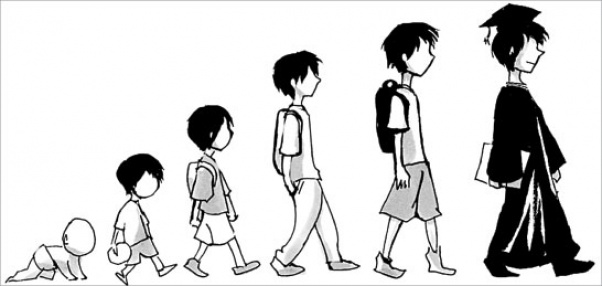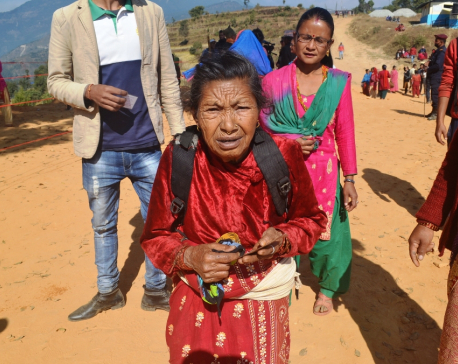
OR

More from Author
We should always ask whether any legal, policy or program choice will benefit all children regardless of who they are and where they come from
Nepal has made commendable progress in achieving Millennium Development Goals (MDGs) on child and maternal mortality. Under-five mortality went down from 162 per 1,000 live births in 1990 to 54 in 2011, which met the MDG target of reducing under-five mortality rate by two-thirds between 1990 and 2015. Similarly, maternal mortality was reduced from 850 deaths of mothers per 100,000 live births in 1990 to 170 deaths in 2013, which exceeded the MDG target of reducing maternal mortality ratio by three quarters.
However, this is not the entire story. A slightly deeper analysis of relevant data quickly reveals that there is huge inequality in the achievements made in terms of who you are and where you are from. A child born in an urban region is more likely to survive than one born in a rural area. Eighty-seven children per 1,000 live births die before their fifth birthday in mountainous region compared to 62 in Tarai. There is also a vast regional variation as 82 children per 1,000 die under five years of age in the far-western region, while 55 die in the eastern region.
The same data shows that the chances of survival of children born to a wealthy and a poor family are startlingly different—75 deaths per 1,000 birth in the lowest wealth quintile versus 36 deaths in the highest wealth quintile. As one would expect, mother’s education is inversely related to the child’s risk of dying. Under-five mortality among children born to mothers with no education (73 deaths per 1,000 livebirths) is more than double that of children born to mothers with SLC or higher education (32 deaths per 1,000 live births).
A similar trend is visible in education related data. Just like with the health related indicators, overall national figures in education seem quite promising. Primary school enrolment rate stands at 96.2 percent. However, the down-side is that while only one percent children of primary school age are out of school in Kathmandu, around 10 percent are out of school in Saptari and 30 percent in Manang. This shows that there is some inherent flaw in the way development interventions are being planned and implemented.
There is a clear message to be gleaned from the data above. Progress in aggregates is not good enough. A human rights-based approach would require that no one is discriminated based on any criteria whatsoever. The Convention on the Rights of the Child, which Nepal ratified in 1990, has non-discrimination as one of the guiding principles. Article 2 of the Convention obligates the State party to ensure all rights to ‘each child without discrimination of any kind, irrespective of the child’s or his or her parent’s or legal guardian’s race, color, sex, language, religion, political or other opinion, national, ethnic or social origin, property, disability, birth or other status.’ Yet, everyday reality in Nepal is that discrimination is ongoing, that some children are better off than others simply because of who they are and where they are from.
Disparity as explained above is not unique to Nepal. While in a space of a generation the world has halved child mortality and the number of out of school children, millions have been bypassed by these gains.Global evidence suggests that poverty and discrimination combine to exclude children which is true in case of Nepal as well. In order to fight these financial and discriminatory barriers, the following three guarantees must be made:
Fair financing
Insufficient, inefficient and unequal public investment in essential services for children is a major barrier that needs to be tackled. Resources spent on children need to be seen as ‘investment’ and not as ‘expenditure’. Children need to be more visible in budgets prepared by both national and local governments. All financial barriers to essential services such as education, health, nutrition, etc need to be removed. Social protection schemes should be expanded to cover the children who are most deprived and marginalized in order to provide a levelled playing field for every child.
Equal treatment
Discriminatory norms and behavior that prevent children from surviving and learning must be challenged. There are several such norms but two are the most prominent in Nepal: child marriage and violence in school, both disproportionately affecting girl children. Fifty-two percent of girls in Nepal are married under the age of 18, which is not only illegal but also creates a number of hazards including early pregnancy, maternal death and has huge social costs. Most of those married girls are compelled to discontinue education, which perpetuates poverty cycle and also increases their child’s risk of dying as explained above.
Violence against children is another malpractice that negatively impacts children’s health and keeps them out of school. Adolescent girls, for example, are forced to quit school when the school environment is intimidating, if they are sexually harassed or if they don’t have an access to toilets in the school. The Policies and Programs of the Government of Nepal for the fiscal year 2016/2017 has a provision to mandatorily establish a ‘female toilet’ in every school. Although this may sound trivial to many, if implemented seriously, this would be a huge step forward for millions of girls in schools who have real difficulty maintaining their hygiene, particularly during menstruation. Nepal is yet to criminalize all forms of violence against children, including corporal punishment, which should be done as a matter of priority to ensure every child a safe and protective environment both at home and in the schools.
Accountability to children
The Constitution of Nepal 2015 has made an unprecedented provision—child participation has been enshrined as a fundamental right of the child. This means that all children should be provided with an opportunity to express their views while making any decision that affects them and due regard must be given to those views. Giving voice to the child is a necessary first step to ensure that our policies are child sensitive, that policy makers and implementers alike know what the children want and what is in the best interest of the child.
This is high time that the State made the above guarantees to every child. A question should always be asked as to whether any legal, policy or programmatic choice is going to benefit all children regardless of who they are and where they come from. If not, additional interventions should always be planned and implemented to ensure that no child lags behind. We should all inculcate the habit of asking for disaggregation of data if we want development dividends to be equally divided. Aggregates should not obscure inequalities and every last child should be counted for.
The author is the Senior Child Rights Governance and Child Protection Specialist at Save the Children Nepal Country Office
You May Like This

Is your child hooked to mobile? High time to wean off the child from this bad habit
KATHMANDU, April 25: Do you think children's using mobile (smart) phone is the trend of time and you are allowing... Read More...

Residents leave behind reconstruction, turn to vote
SINDHUPALCHOWK, Nov 26: Keeping aside their reconstruction works, residents of Sindhupalchowk have turned in to cast their votes in excitement.... Read More...

3 days of heavy rain in China leave 50 dead, 12 missing
BEIJING, July 2: Three days of heavy rain in southern China have left 50 people dead and another 12 missing... Read More...





Just In
- MoHP cautions docs working in govt hospitals not to work in private ones
- Over 400,000 tourists visited Mustang by road last year
- 19 hydropower projects to be showcased at investment summit
- Global oil and gold prices surge as Israel retaliates against Iran
- Sajha Yatayat cancels CEO appointment process for lack of candidates
- Govt padlocks Nepal Scouts’ property illegally occupied by NC lawmaker Deepak Khadka
- FWEAN meets with President Paudel to solicit support for women entrepreneurship
- Koshi provincial assembly passes resolution motion calling for special session by majority votes







_20220508065243.jpg)






Leave A Comment